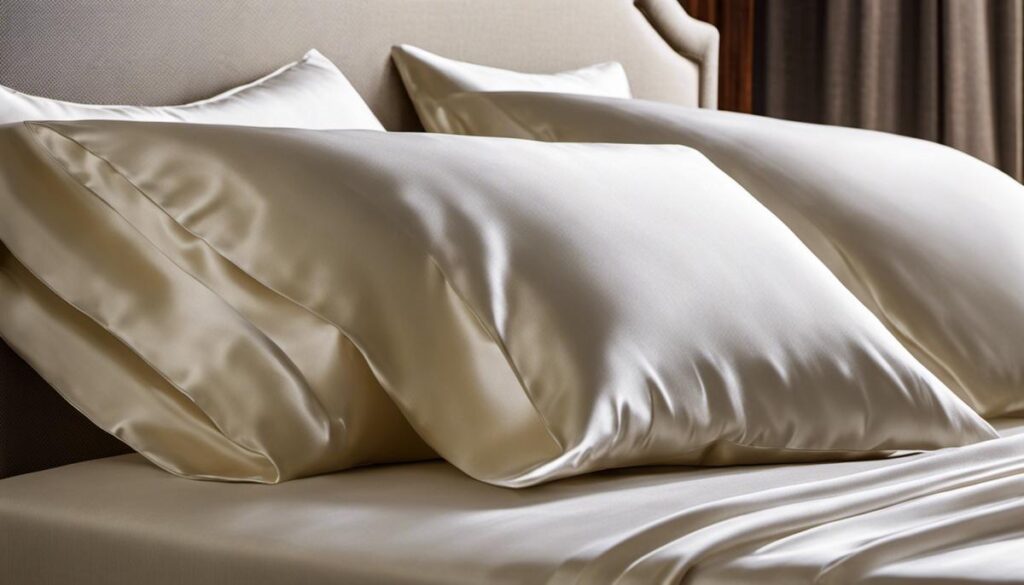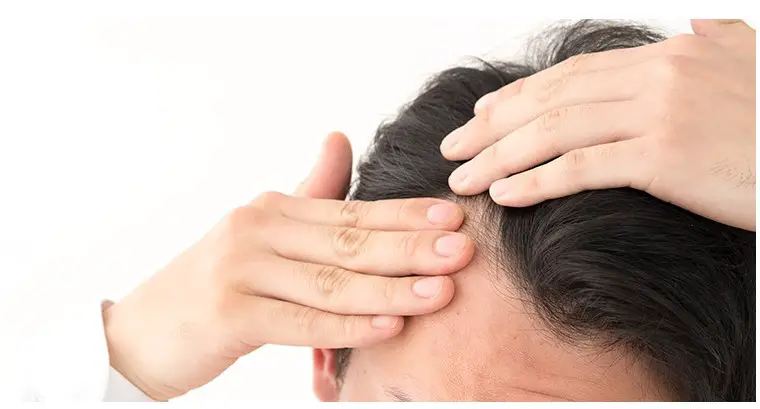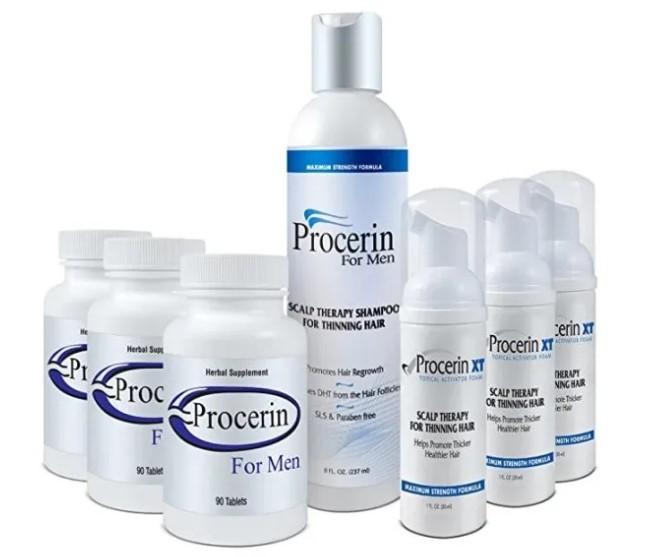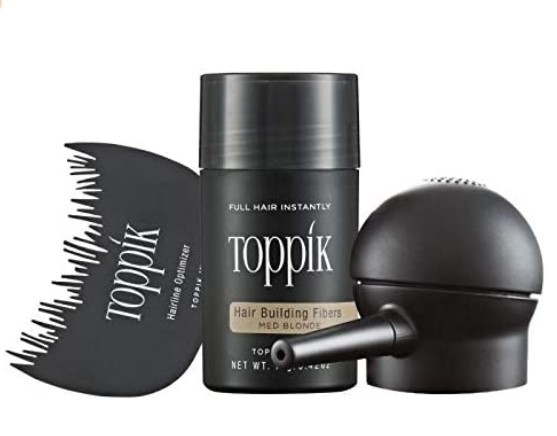As we strive to improve our overall well-being, it is noteworthy to pay attention to seemingly secondary aspects of our life that could hold great significance. Among these is something as simple as choosing the right pillowcase, which might seem trivial, but in fact, can have profound effects on our hair health. The choice between silk and bamboo pillowcases is not solely a decision based on aesthetics or comfort; rather it is an investment in our hair care regime.
Through an in-depth exploration of silk and bamboo pillowcases, we learn about their origin, manufacturing process, and general benefits. More importantly, we delve into the specific impact of silk and bamboo pillowcases on hair health supported by expert views, empirical research, and user testimonials. By comparing these two options based on factors such as hair type, comfort, cost, and durability, we can make an informed choice that goes beyond just choosing a pillowcase—it promotes healthier hair.
Understanding Silk and Bamboo Pillowcases
Silk and Bamboo Pillowcases: Materials of Construction
Silk pillowcases are made from natural silk fibers derived from the cocoons of the silk moth. The construction process of silk is complex and labor-intensive, which involves boiling the cocoons and unwinding the thread from them. The thread is then woven or knit into fabric. The luxurious feel and benefits of silk come from the simple protein fibers produced by the insect.
On the other hand, bamboo pillowcases are crafted from the pulp of bamboo plants. The pulp is processed to extract cellulose, which is then reconstituted into fibers. These fibers are woven together to create fabric that’s marketed as bamboo. The specific qualities of a bamboo pillowcase can vary depending on the exact method used. The fabric is usually strong, breathable, and has a silky feel, although it’s generally not as smooth as genuine silk.
Comparing Comfort
Silk is revered for its smooth, soft texture which is incredibly gentle on the skin and hair. This smoothness reduces friction as you move in your sleep, which may help prevent hair breakage and lessen sleep lines on the skin. The fabric’s natural coolness also adds to its comfort, appealing to those who sleep hot.
Bamboo fabric, while also soft and comfortable, is not quite as smooth as silk. However, it does boast excellent breathability and moisture-wicking properties. This helps regulate body temperature and wick sweat away, enhancing sleep for individuals who tend to sweat at night or live in warmer climates.
Durability: Silk vs Bamboo
Despite its sophisticated appearance, silk is incredibly durable and resilient when properly cared for. However, it does require more delicate handling than other fabrics. Too much direct sunlight can weaken the fibers, and the fabric also needs delicate or hand-washing, further complicating its care.
Bamboo, in contrast, is extraordinarily durable and can withstand numerous washing and drying cycles. Highly resistant to pilling and wear, these pillowcases tend to outlast others when it comes to daily use and washing.
Maintenance and Aftercare
Silk pillowcases require a bit more attention in terms of care. They are best hand-washed in cool water with a gentle detergent. Hang drying is preferable over machine drying. Silicone-free hair products should be used with these pillowcases as silicone can degrade silk.
Bamboo pillowcases, however, can generally be machine washed and dried, making them more convenient for most users. They also get softer with each wash, adding to its appeal.
Cost Consideration
Silk pillowcases are on the higher-end of the price scale due to the complex process of silk production. They are viewed as luxurious items that justify the cost with their unique benefits.
Bamboo pillowcases are less pricey but still provide a lot of benefits. Their sustainable production process also appeals to environmentally-conscious consumers.
Comparing Silk and Bamboo Pillowcases for Hair Health
For improving hair health, silk pillowcases have earned a beneficial reputation. They can minimize hair damage due to their smooth texture, leading to less friction between your hair and the sleeping surface. This friction reduction can potentially prevent split ends, maintain hairstyle, reduce frizz, and enhance the overall health of your hair.
Bamboo pillowcases, although not as acclaimed for hair health, also present unique advantages. Their soft and smooth surface is certainly kinder to hair compared to traditional cotton pillowcases. Additionally, the moisture-wicking abilities of bamboo can contribute to maintaining a balanced hydration level in your hair overnight.
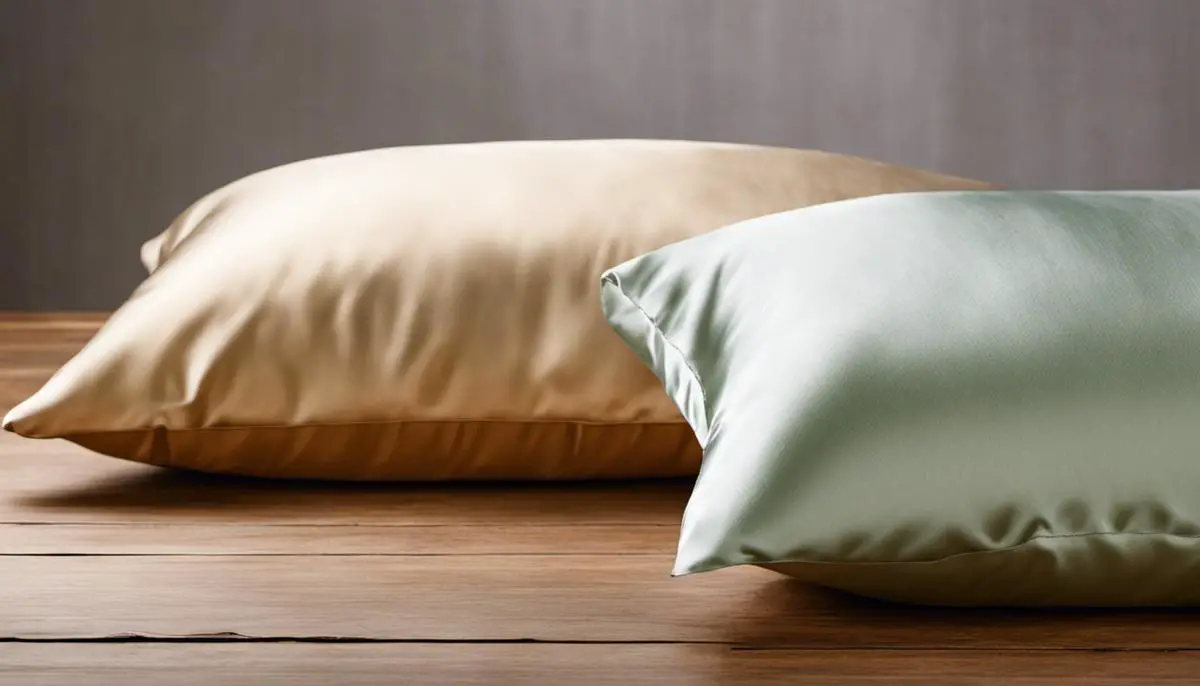
Impact of Silk Pillowcases on Hair
A Closer Look at the Benefits of Silk Pillowcases for Hair Health
It’s been observed that silk pillowcases offer quantifiable benefits to the health of your hair. The ultra-smooth texture of silk reduces sleep-induced friction on hair, which in turn mitigates mechanical damage that causes breakage, split ends, and frizziness.
Amazon Bamboo Pillowcase for Hair and Skin
Notably, silk is also less absorbent than cotton. Hence, when you sleep on a silk pillowcase, the moisture and natural oils from your hair are less likely to be absorbed away. This may especially benefit those with dry hair, dreadlocks, or hair prone to frizziness, as hydration retention can contribute to healthier, better-managed locks.
Several studies echo the benefits of silk for hair. A particular study published in the Journal of Dermatology and Cosmetology endorsed silk pillowcases for their lowering hair friction and the subsequent decrease in hair damage, especially among individuals with long hair. Similarly, many hair care experts continually favor silk pillowcases for their protective qualities.
Anecdotal experiences also seem to back the benefits of silk pillowcases. There are many accounts of individuals who have switched to silk pillowcases noticing a significant improvement in the health and looks of their hair over time.
A Comparative Look at Bamboo and Silk Pillowcases
When comparing bamboo and silk pillowcases, one notes that both are celebrated for their smooth texture that could reduce hair damage. Like silk, bamboo offers a soft surface that cuts down on friction. Yet, there’s a marked contrast in the innate properties of the bamboo fibers and silk.
Interestingly, bamboo’s high absorbency enables it to draw moisture away, up to 4 times as cotton does. This factor could be a boon for those who perspire excessively while sleeping. Nevertheless, it might also imply that a bamboo pillowcase could absorb hair oils to a greater degree than its silk counterpart.
Bamboo’s impressive durability is another point of consideration, as it can withstand continuous washing. Silk, conversely, might call for more delicate handling to sustain its quality.
Yet, the consensus is not unilateral, as user experiences and reviews vary. A group of people endorses bamboo pillowcases because of environmental sustainability, softness, and durability. Meanwhile, others are adamant about the hair benefits, luxury feel, and thermal regulating properties of silk pillowcases.
The ultimate decision between silk and bamboo could relate to individual preferences, correlated to elements like hair type and individual lifestyle necessities.
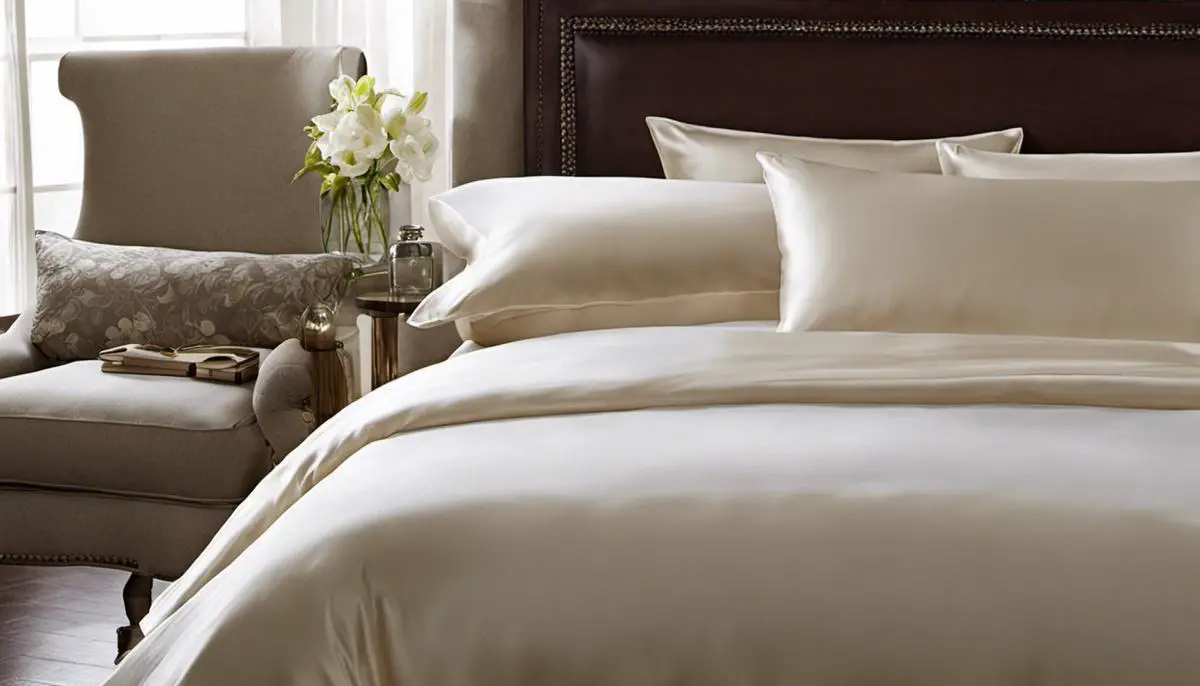
Impact of Bamboo Pillowcases on Hair
Highlighting the Positive Effects of Bamboo Pillowcases on Hair
Bamboo pillowcases have been extolled for their far-reaching impacts on hair health and possess advantages that might surprise you. Boasting hypoallergenic qualities to their temperature-regulating abilities, having a bamboo pillowcase can be a good strategy for those keen on healthier hair. Expert endorsements complement client testimonials.
A standout benefit of bamboo pillowcases is their hypoallergenic trait. The bamboo fabric is naturally defiant against bacteria, molds, and other unwary intruders. This property contributes to a cleaner sleeping environment, shielding your hair from these harmful agents. For people with sensitive scalps, hypoallergenic bamboo pillowcases could mitigate inflammation and irritation, fostering better hair and scalp health.
Furthermore, bamboo pillowcases offer superior temperature-management capabilities. They balance body heat, retaining coolness in hot climates and affording warmth in chillier conditions. This aids in maintaining the scalp temperature, a crucial factor affecting hair health. By keeping dryness at bay, it encourages a healthier scalp, leading to stronger and less brittle hair.
The issue of frizz control is a key debating point in the bamboo versus silk contest for hair health. Bamboo pillowcases earn accolades for their ability to curb frizz, courtesy of their smooth and soft texture. Conversely, cotton pillowcases can generate friction, inducing breakage and a frizzy hair look. Bamboo fabric permits hair to slide smoothly over its surface, translating to reduced friction and, consequently, lesser frizz.
Experts are all for bamboo pillowcases, underlining the hypoallergenic, temperature-managing, and frizz-controlling benefits. Various studies on pillowcase materials’ influence on hair have ascertained that bamboo fabrics could foster healthier and stronger hair. Users review improvements in hair health, texture, and overall appearance post-transition to bamboo pillowcases.
A Comparative Study of Bamboo and Silk Pillowcases
Silk and bamboo pillowcases, the frontrunners in the world of hair care essentials, bring their unique sets of advantages to the table. Silk pillowcases, akin to bamboo, promise a comfortable and plush sleeping experience and offer various benefits in terms of hair health. They are renowned for their gentle touch on hair, as they decrease frizz and safeguard against breakage with their low-friction nature.
Nonetheless, what gives silk an edge over bamboo is its capability to retain moisture. Unlike bamboo, silk does not absorb moisture which aids in preserving your hair’s natural oils, ensuring your hair stays hydrated and glossy. However, there’s a catch- silk is naturally sensitive to temperature changes and lacks the efficient heat regulation of bamboo. This could lead to heat buildup during sleep, potentially drying out your scalp and hair.
While silk pillowcases are typically pricier than bamboo ones, limiting some consumers’ reach, bamboo strikes a happy medium between affordability, benefits, and eco-friendliness, making it a consumer favorite.
In sum, whether you choose a bamboo or silk pillowcase primarily depends on personal preference and specific hair care requirements. Both fabrics have their own merits and using a blend of the two could be advantageous to some. However, it is essential to consider that a pillowcase material’s impact on hair health is just one piece of the puzzle, with diet, lifestyle, and hair care routine playing equally significant roles.
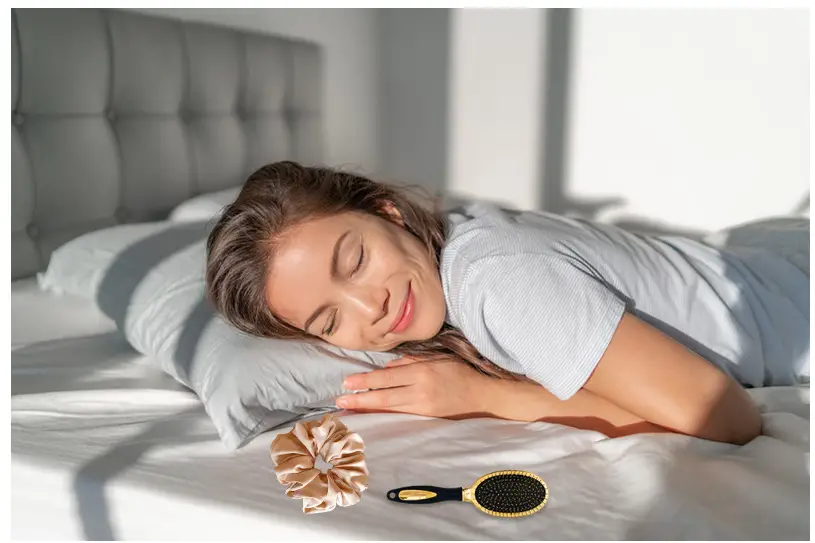
Comparative Analysis: Silk vs Bamboo Pillowcases for Hair
Silk versus Bamboo Pillowcases: Evaluating their Impacts on Hair Health
Choosing an appropriate pillowcase material can considerably shape the health of your hair during sleep. Silk has traditionally been a favored choice, owing to its multitude of benefits. Renowned for its smoothness, silk considerably reduces friction, thereby preventing hair damage such as breakage and split ends. This quality has earned it the endorsement of many hair stylists and experts. However, bamboo is catching up as a noteworthy competitor in the realm of hair care, promising intriguing benefits.
Hair Type: Silk vs Bamboo
Both silk and bamboo are beneficial for all hair types. However, if you have particularly frizzy hair or curls, silk might be a slightly better choice, as it helps to retain the natural oils in your hair and keep it hydrated. Bamboo, on the other hand, is more absorbent, which can help if your hair tends to be oily.
Climate Differences and Care Considerations
In terms of breathability and temperature regulation, bamboo outperforms silk. The natural properties of bamboo fabric allow it to wick away excess moisture and heat, making it an ideal choice for warmer climates or for those who tend to heat up during sleep.
Affordability: Silk vs Bamboo
Silk is a luxury item, and this is reflected in the price point. Authentic, high-quality silk pillowcases can get quite expensive. Conversely, while bamboo cases are not necessarily cheap, they are more affordable than their silk counterparts. Also, considering they can be machine washed, they may last longer and offer better value for the money in the long run.
Personal Preference and Comfort
When all the benefits and drawbacks are weighed, the choice between silk and bamboo might all come down to personal preference. If you prefer the cool, luxurious feel of silk and have the budget, it could be your choice. If you are looking for a more affordable, less delicate option that is still soft and beneficial for hair health, a bamboo pillowcase might be the way to go.
How To Choose
Think about your specific hair needs (do you have oily hair or is it more on the dry side?), consider the climate you live in (do you tend to get hot at night?), and finally, decide how much you are willing to spend and maintain the pillowcase.
In conclusion, both silk and bamboo have unique benefits to offer so your choice will depend on various factors, including hair type, personal comfort, climate, and budget.
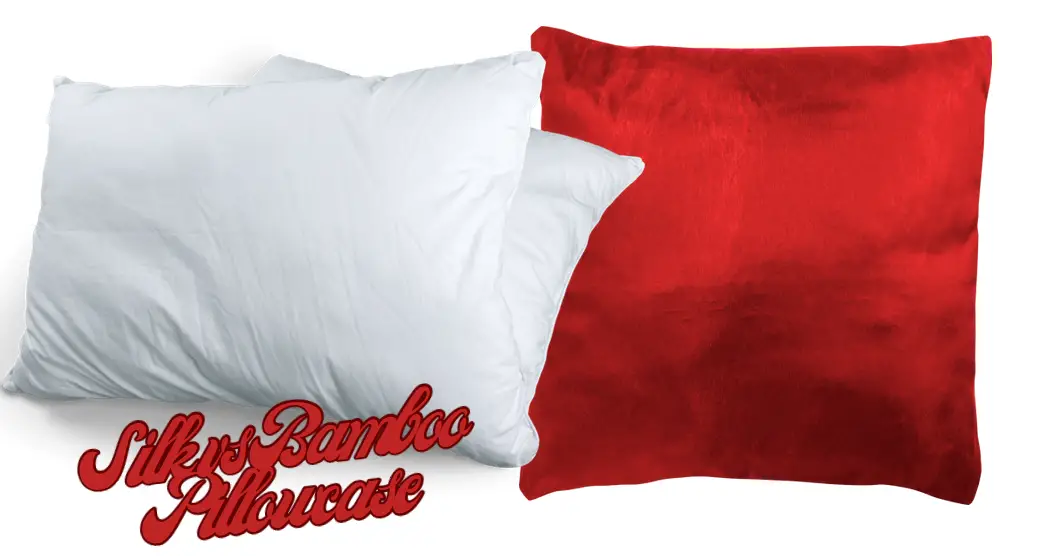
Studying both silk and bamboo pillowcases and their impact on hair health, we see that both offer unique advantages. Silk’s ability to reduce hair friction and help retain moisture pairs well with bamboo’s hypoallergenic attributes and temperature regulation capabilities. However, choosing between these two options is not a one-size-fits-all scenario.
It requires careful consideration of various factors including your hair type, preferences, climate, budget, and the ease of maintaining the pillowcase. Therefore, the choice between a bamboo and silk pillowcase holds more depth than it initially appears, transforming from a simple home decor decision into a key component of our hair care routine. By making an informed decision, we can prioritize our hair health in an aspect of our daily lives that we might have previously overlooked.
Reference:
https://sewport.com/fabrics-directory/bamboo-fabric
- AI Powered Bald Filter Online 2024: See Yourself with No Hair! - January 19, 2024
- Harklinikken Bad Reviews 2024: Analyzing Negative Feedbacks - January 18, 2024
- How to Get the Alex Eubank Hair | Step-By-Step Tutorial 2024 - January 18, 2024

